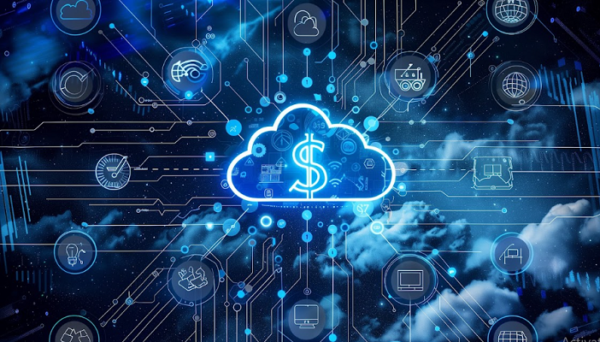
Key Takeaways:
- Expense management automation simplifies the entire process of reporting expenses by removing the need for manual data entry and paperwork, thereby enhancing both efficiency and accuracy.
- Automated systems provide real-time insights into spending patterns, ensure compliance with company policies, and enhance overall financial control.
- Adopting automated expense management not only cuts costs significantly but also boosts employee happiness with faster reimbursements and aids in environmental conservation efforts.
Do you dread the monthly ritual of sorting through receipts and filling out expense reports? Traditional expense management is a time-consuming hassle for everyone involved, leading to errors, delays, and frustration. But what if there was a better way?
Expense management automation makes the whole process smoother by cutting out manual data entry and paperwork. This guide will equip you with the knowledge to understand how automation tackles common challenges, saves you money, and empowers both employees and businesses.
Key Components Of Expense Management Automation
Expense management automation involves several critical components that work together to streamline the entire expense management process. Here are the key components:
Expense Reporting
- Digital Submission: Employees can submit their expense reports digitally through a web or mobile app, eliminating the need for paper receipts.
- Receipt Capture: Users can take photos of receipts and upload them directly to the system, which often includes Optical Character Recognition (OCR) technology to extract data automatically.
Expense Tracking
- Real-Time Monitoring: The system tracks all submitted expenses in real-time, allowing managers to monitor spending patterns and identify any anomalies.
- Categorization: Expenses are automatically categorized based on predefined rules, making it easier to analyze spending by type, project, or department.
Expense Approval
- Automated Workflows: Expense reports are routed through predefined approval workflows, ensuring that they reach the appropriate approvers without delays.
- Policy Compliance: The system checks each expense against company policies to ensure compliance, flagging any violations for review.
Reimbursement Processes
- Automatic Calculation: The system determines reimbursement amounts from approved expenses, ensuring they are accurate and consistent.
- Timely Payments: Approved expenses are processed for reimbursement promptly, often through direct deposit to employees’ bank accounts.
Integration With Financial Systems
- ERP and Accounting Software: Expense management systems integrate with enterprise resource planning (ERP) and accounting software to provide seamless data flow between systems.
- Credit Card Integration: Business credit card transactions can be automatically imported and reconciled with an expense report.
Benefits Of Expense Management Automation

Expense management automation offers numerous advantages that significantly enhance the efficiency and accuracy of handling business expenses. Here are the key benefits:
Increased Efficiency
Automated expense management systems streamline the entire process, from expense submission to approval and reimbursement. This reduces the time and effort required to manage expenses manually. Employees can easily submit their expenses via intuitive interfaces, while managers can approve these reports with just a few simple clicks.
Cost Savings
Automated expense management systems simplify operations, significantly reducing costs by decreasing mistakes and boosting efficiency. Traditional manual methods often face issues like lost receipts and data entry errors, leading to financial discrepancies and increased administrative costs.
Improved Accuracy
Accuracy is a major benefit of expense management automation. Automated systems eliminate the risk of human error associated with manual data entry and calculations. Features such as OCR technology accurately extract data from receipts and other documents, ensuring precise expense records. The system also ensures that all expenses are categorized correctly and comply with company policies.
Enhanced Compliance
Compliance with internal policies and external regulations is essential for any organization. Automated expense management systems ensure compliance by automatically verifying each expense against established rules and guidelines. This ensures every expense aligns with company policies and regulatory standards, reducing the risk of non-compliance and the possibility of penalties.
Real-Time Insights And Reporting
Automated expense management systems provide real-time insights into spending patterns and trends. The built-in analytics and reporting tools are like having a team of expert financial detectives on your side. Detailed reports shine a light on every nook and cranny of your expense management – cost centers, project spending, policy offenders, you name it. And those visual dashboards? They serve up all the key metrics and data in an easily digestible format, empowering managers to make confident calls based on real-time intel.
Enhanced Employee Satisfaction
Timely reimbursement is a significant factor in employee satisfaction. Automated expense management systems ensure that approved expenses are reimbursed promptly, often through direct deposit. This eliminates the frustration of delayed payments and enhances the overall employee experience.
Better Budget Control
With automated expense management, organizations can achieve improved oversight of their budgets. The system provides real-time visibility into spending, allowing managers to monitor expenses against budgets continuously. This helps in identifying budget overruns early and taking corrective actions promptly.
Scalability
Automated expense management systems are highly scalable, making them suitable for organizations of all sizes. Whether a small business or a large enterprise, the system can handle varying volumes of transactions efficiently. As the organization expands, the system seamlessly scales to support more users and transactions while maintaining its performance and accuracy.
Integration With Other Systems
The integration capabilities of automated expense management systems enhance their overall effectiveness. These accounting systems can seamlessly integrate with other financial and expense management automation software, such as ERP systems and payroll applications. This ensures a smooth flow of data across different systems, reducing the need for manual data transfers and minimizing the risk of discrepancies.
Environmental Benefits
Automating expense management also has environmental benefits. By minimizing the reliance on paper receipts and manual records, organizations can greatly reduce their paper consumption. This contributes to environmental sustainability efforts and supports corporate social responsibility initiatives.
Conclusion
Traditional expense management methods? They’re outdated, prone to mistakes, and belong in a museum of inefficiencies. Enter expense management automation: a revolutionary change that transforms a once cumbersome chore into a smooth, effortless process. Make no mistake, though – this innovative solution isn’t just about saving time and money. It’s about arming your business with the power to make smarter financial calls and gain an edge over the competition in today’s fast-paced marketplace.

















